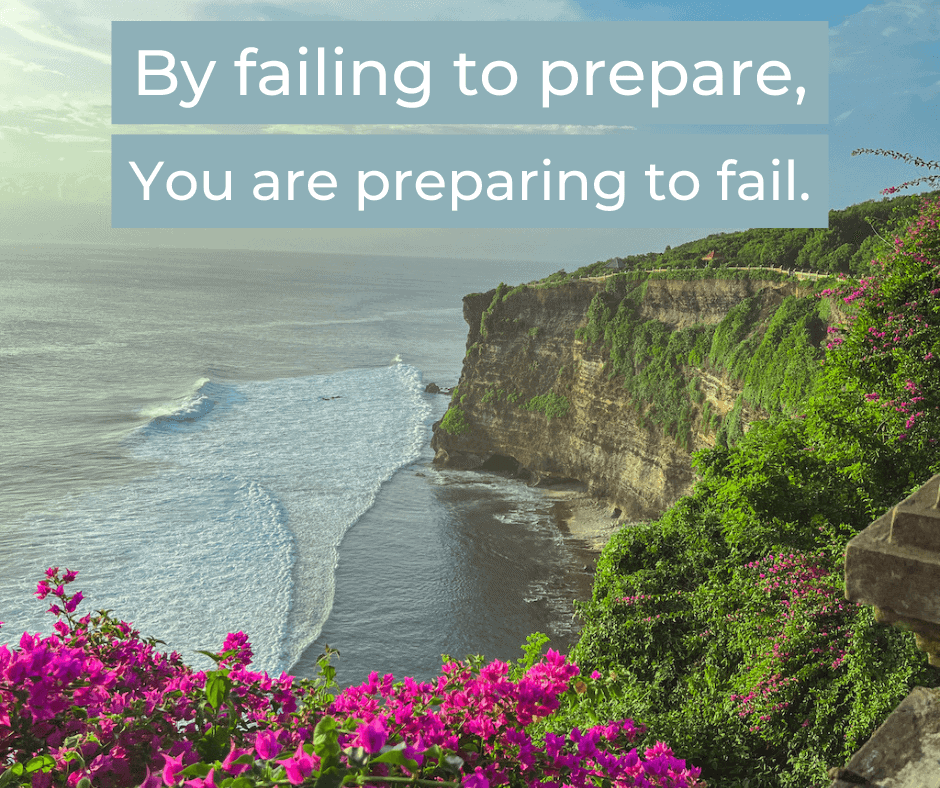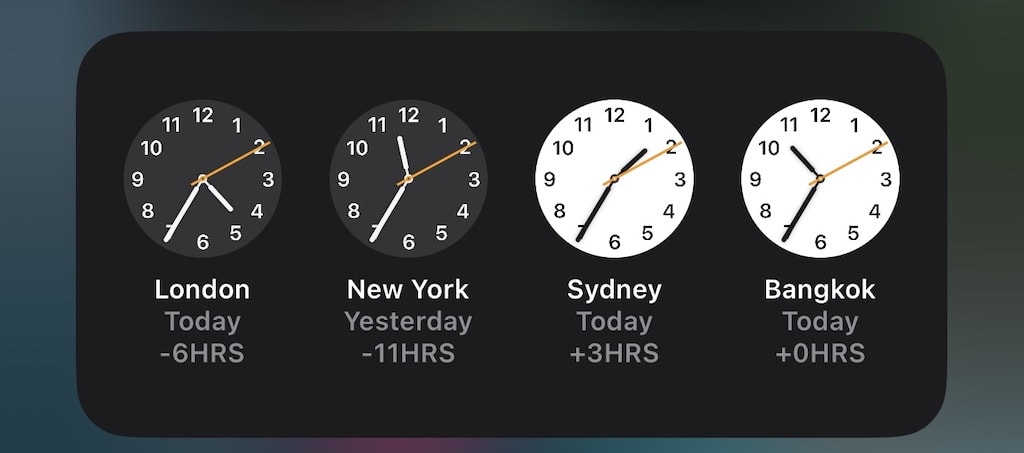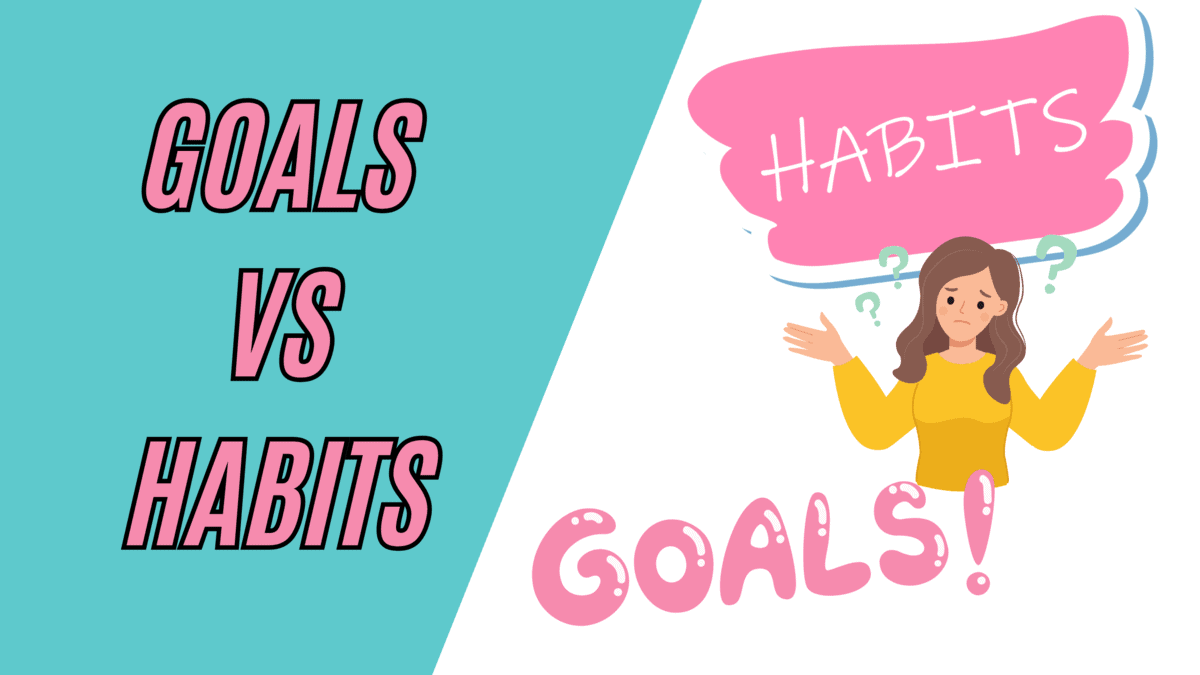You get your freelancing business off the ground, get a couple of clients under your belt, and you hit the road to live the digital nomad dream…
Until it’s 2 am on a Tuesday and you’re sitting in your hotel room with 3 client calls ahead of you because you didn’t prep for the time difference.
We recently set off traveling and learned VERY quickly that managing time zones when we’ve got clients across the world is a lot more important than we first thought.
We firmly believe that if you’ve got the opportunity to travel, take it…But with one golden rule.
No matter how much fun you’re having, your clients and your work have to come first. Because you won’t get very far if those clients stop coming back.
There are 24 time zones in the world. And the further you travel, the more likely they are to affect your work. So, here’s our 4 ways to handle time zones as a digital nomad:
1. Be Prepared

It’s all well and good telling you to make sure you’re prepared, but what can you actually do to make your new digital nomad lifestyle a success?
Work Out the Time Differences Beforehand
Before you set off from your home country and every single time you move to a new place, check beforehand what your local time will be.
It seems like a simple task but trust us, you don’t want to be rearranging or even missing calls because you didn’t take the time to check. If you’re using Google Calendar, it should automatically detect your time zone and ask if you want to shift your calendar to align with your new time – by far the best way to keep on top of it!
Before we arrive at any new location, we also check out World Time Buddy – a quick and easy way to compare the time at your destination versus your client’s country to make sure you can still make it to all of your regular calls.
Tip: Note down when your client’s office hours fall for your new time zone so you know the best time to get in touch with them whenever you need a quick response.
For iPhone users, adding the ‘clocks’ widget to your home screen is also a must so you can double, triple check your time difference before scheduling any calls.

The last thing you want is to ghost your client because you worked out the time wrong.
Check Your Deadlines, Then Check Again
This is a really easy mistake to make.
Let’s say you usually submit work to your client at 12 pm on a Friday, just in time for them to review it before they head off for the weekend.
But now you’re 8 hours behind…
Friday rolls around and you wake up to 3 emails, 2 messages, and a missed call from your client…. OOPS!
Because you were still planning to submit your work by Friday at 12 pm…your time.
You might be thinking “That’s a stupid mistake, I would never do that”
That’s what we thought too…
But trust us, when you’re spending half of your weeks on the beach and exploring new places, these things can easily slip your mind.
Set Expectations For Your Meeting Availability
For the most part, you should be able to establish some workday overlap between you and your client.
Once you have these times, let your clients know exactly when they can expect you to be available for meetings. If you’re using a coworking space, you can also book a meeting room.
This is an important one.
Setting boundaries like this is crucial whether you’re at home or away. Your clients need to know that they can’t call on you 24/7 and expect a response.
That doesn’t mean your clients will always remember though. That’s why we’ve set up a super simple autoresponder on our email accounts that acknowledges we’ve received your email and will get back to you soon.
We’ll get into a little more on autoresponder emails later.
2. Communicate Well

I can’t stress enough how important communication with your clients is key to making your new digital nomad lifestyle a success.
More importantly, it’s essential to any successful business.
Some clients might be apprehensive about how you’re going to keep up with work and communicate with them whilst you’re away. So, it’s your job to put their mind at ease.
Always let them know in advance if you’ll be out of cell service, out of office for a few days, or can’t make it for a scheduled call.
Regular Check-Ins
Plan to check in with your clients on a weekly or fortnightly basis via email. It’s a great way to maintain communication, keep your client up to date, AND keep you off those dreaded late-night or early-morning meetings.
And remember, honesty is the best policy.
If you’ve got a full 24-hour travel day coming up and you know it’s going to take you a few days to get over the jet lag – Tell your client. Don’t just drop out of communication.
Set Expectations Early On
If you have existing clients, let them know weeks, if not months before you leave that there are going to be some changes and what they can expect them to be:
- Working in different time zones
- Reduced working hours and availability for meetings
- Frequent days of radio silence when traveling
If you have a good relationship with your client and guarantee all your deliverables will still be met, there shouldn’t be any problems, should there?
If your client does have an issue with it because they like to micro-manage…*red flag*, it might be time to start looking for some new clients anyway.
Advise Clients to Allow 24 Hours for a Response
Let your clients know that you will get back to them within 24 hours.
Tip: If you’re working with clients, you should be doing this at home anyway. Constantly fielding client emails means your deep work will suffer. We check our emails only at the beginning and end of our workday.
This does 2 things:
- It allows you enough time to receive the message, take actions where necessary, and respond
- Encourages your clients fit everything they want to ask in 1 email rather than 5 emails across the day
And ALWAYS keep your out-of-office email responder turned on to remind them. Use our template below.

Hi there,
Thank you so much for your email.
All inquiries will be responded to within 24 hours (except on weekends).
Talk soon,
Emma
Be Respectful of Your Client’s Time
As a digital nomad, chances are you don’t work normal office hours anymore. But your client still does (usually).
Here are some of our top ways that we stay respectful and make sure our emails don’t get lost in our clients’ inboxes:
- Send emails during their working hours wherever possible. No one wants to receive emails in the middle of the night
- Respect their weekends and save your emails or messages for Monday morning. This also stops you from getting lost amongst the 100s of emails sitting in their inbox when 9 am on Monday comes around.
- Even if it’s inconvenient for you, all meetings MUST be during their office hours. Asking them to jump on a call at 9 pm is unprofessional – even if that means you’re the one getting on a call at 9 pm instead.
3. Set Boundaries
Let’s say that again so it sinks in.
Set. Your. Boundaries.

If you only work Monday-Wednesday. Or don’t want to work after 7 pm. It’s up to you to set those boundaries and stick to them.
It’s easy to let your boundaries slip just this once because you would have done it at home. But, before you know it you’re on a call at 3 am every week because you’ve set that precedent for your client.
How much of an asset are you going to be on a 3 am call anyway?
We’ve been there, done that, and NOT got up the next day to go sightseeing.
So we know from experience you will not be on your A-game.
Not to mention all the research there is on the connection between lower work performance and efficiency of people doing night shifts, which is essentially what you’re doing when you let those boundaries creep.
Remember: You started this journey to live the life you want and see the world, not be tired all the time. If you’re not making your time work for you, then what’s the point?
There are a few ways we learned pretty quickly to do this:
Allocate Certain Days for Meetings
We like to tell our clients that we are only available for calls on certain days so that
- We don’t have clients throwing a meeting in the calendar when we’ve already booked a diving trip
- Our clients know that if they need to talk to us, we will always make time for them on those set days
If you don’t already use Calendly, check it out to remove the back and forth of setting up your meetings and protect your schedule by allowing clients to only book time in your calendar on the days and times you choose.
Only Take Scheduled Calls
Have you ever been on a jungle trek when you see an email from a client saying they need to get on a call in the next hour? You spend most of that hour scrambling to find a cafe, or anywhere that has mediocre wifi…
You get on the call, it’s crackly, you can barely hear them, they can barely hear you.
Turns out, they just had a question that definitely could’ve waited until your scheduled call next week.
You guessed it, we’ve been there, done that as well.
We made the mistake so you don’t have to.
Pick your work days, set up some times in your Calendly, and let your client know if they need to get on a call with you, that’s where they can go to book it in.
4. But What if I HAVE to Get on That 3 AM Weekly Call?
Unfortunately, depending on what you do, regular calls with a client in a completely different time zone might be unavoidable.
So, you’ve got a couple of options to make it work.
Plan Your Destination Around Your Work
If it’s part of your contract that your working hours have to overlap with theirs, then unless you can renegotiate, your only option is to plan your destinations around your work.
A great example of achieving this is traveling to Europe if you have clients in the US. Spend your mornings wandering around new cities, and jump online for the afternoon once your US clients are heading to work.
If you’re worried about managing time while you work abroad, Europe is a great place to travel as your workday catches pretty much all the major time zones.
Start Searching for New Clients
You might think we’re being harsh here but this is exactly what we had to do ourselves.
We headed out to Bali and quickly realized that missing the 10 pm weekly meeting with our biggest client wasn’t going to work. We HAD to be there.
Don’t get me wrong, they were a great client. But the way they worked just didn’t match our new lifestyle, and you might find the same thing with some of your clients.
So? Get pitching. There are plenty more clients in the sea. And it might be daunting if the client you need to fire is a big earner for you, but you’ve already taken the leap and moved across the world right?
Maybe it’s time to take another leap and cut them loose – respectfully and with notice of course (let’s not burn any bridges!).
Setting off and becoming digital nomads was the most exciting and scariest thing we ever did – but totally worth it!
Managing our time was one of the hardest parts by far. So, if you’re still feeling daunted by the prospect of how on earth you’ll manage your work, go check out our full guide to the 10 techniques you need to manage your time as a digital nomad.




